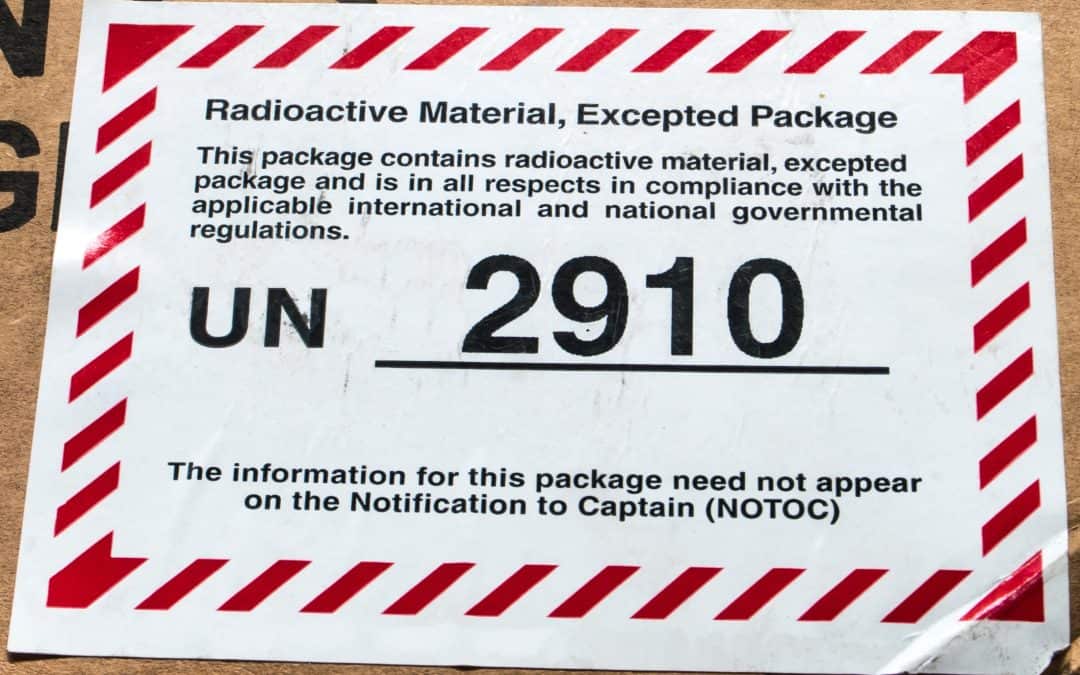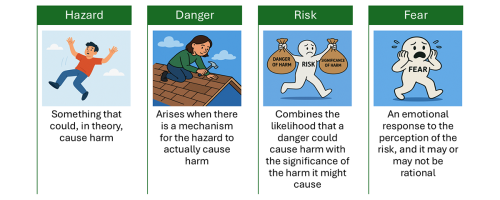It is expected that in the fall of 2023, the Transportation of Dangerous Goods (TDG) Regulations will be amended to require persons who handle, offer for transport, or transport dangerous goods in Canada receive training in alignment with Canadian Standards Board Standard 192-3-2020: Transportation of Dangerous Goods Training, Assessment, and Competency.
Transport Canada is the regulator for all 9 classes of dangerous goods in Canada through the Transportation of Dangerous Goods Act and Regulation. The class for radioactive materials is Class 7. For substances and devices regulated by the Canadian Nuclear Safety Commission, the Packaging and Transport of Nuclear Substances Regulations under the Nuclear Safety and Control Act must be followed, along with all other CNSC regulations applicable to the substance or device. Both Transport Canada and the CNSC refer to the other regulator’s regulations within their own, as well as to the Regulations for the Safe Transport of Nuclear Materials published by the International Atomic Energy Agency (or IAEA).
In the case of naturally occurring radioactive materials, or NORM, not involved in the nuclear fuel cycle, the Packaging and Transport of Nuclear Substance Regulations give levels at which regulation goes to provincial/territorial jurisdiction and unconditional release limits. To help determine the applicable regulations for NORM by radionuclide, please see Volume III Transportation: Canadian Guidelines for the Management of Naturally Occurring Radioactive Materials (NORM), created by the Federal Provincial Territorial Radiation Protection Committee. This will help you know if the TDG regulations apply to your NORM radionuclide. If in doubt, well before starting transport processes, contact Transport Canada or the CNSC through non‐emergency channels.
Part 6 of the current TDG Regulations gives the training requirements for anyone who handles, offers for transport, or transports dangerous goods. In Section 6.1 (1)(a), it tells that such a person must be “adequately trained” and hold an according training certificate. Section 6.1 (1)(b) tells that those who do not meet the requirements of subsection (a) must be in the presence and under direct supervision of someone who is.
On December 11, 2021, the Canada Gazette, Part I, Volume 155 Number 50: Regulations Amending the Transportation of Dangerous Goods Regulations (Part 6 – Training) was published. This document explains the reasoning for and process of amending the TDG regulations to remove the term “adequately trained” and instead incorporate a training standard based on competencies developed by Canadian General Standards Board, along with other related changes. You can also find the proposed regulatory text which refers to it at the bottom of the Gazette Part I publication.
It is expected that the amended regulations will be published in the Gazette Part II this fall, once documents to support their implementation are prepared to be available to the Canadian public. While the new regulations will come into force on the day they are published, there will be a 12‐month grace period for people to comply, making the expected date for full implementation the fall of 2024. Please check the Gazette Part II publication once released for the actual wording of the amended regulations.
Two major changes proposed are to require people be competent in accordance with the CGSB‐192.3 standard instead of being adequately trained, and for them to hold a certificate of competency instead of holding a training certificate. Most of the proposed amendments are about changing the subsections of Part 6 – Training of the current regulations to refer to the new standard and the concept of a certificate of competency rather than training certificate.
One of the largest shifts in training requirements in adopting the new standard: the requirement for competency‐based training. From the Gazette Part I: “Competency‐based training is a performance‐based approach that focuses on the outcome (competency), rather than prescriptive methods (e.g. prescribing the number of hours of training required). […] The main components of a competency‐based training and assessment (CBTA) approach, in the handling and transport of dangerous goods, is to ensure that employees receive both general and function‐specific training for their tasks; that there are set performance criteria in place to evaluate competence; that records of training and assessment are maintained; and that there is recurring training and assessment as needed to maintain skills.” Details on what this is expected to look like is given in the body of the standard.
In reading the standard, those involved in training previously will recognize changes to the general awareness including needing to cover all classes and topics, the identity requirements, the number and scope of questions, and pass mark, but probably the biggest change brought in by the standard for most employers is the need to assess clearly defined function‐specific competencies. There is currently the requirement for employers give task‐specific training to ensure people are competent before signing a TDG certificate. Section 6.2 of the standard requires that the employer give employee current and relevant training based on their tasks as listed in sections 6.2.1.1 (for road, rail, and marine) and 6.2.1.2 (for air). Once you determine the tasks involved, you go to the appropriate Annex for detail about the subtasks, points to assess performance, and associated knowledge required to be assessed in order to state that an employee is competent at the tasks: Annex C for road, rail, and marine and Annex D for air.
For more information about the CAN/CGSB 1923 standard the amendments to the TDG Regulations, please see our webinar on this topic given on June 27, 2023. The links to the video and reference materials are found at https://radiationsafety.ca/services/webinars/. We recommend all those responsible for TDG training download and read the Gazette Part I and the new standard in anticipation of the coming regulations. While there will be a year to implement once the regulations are declared, and there is no firm date on which this will happen, by reading it in advance of the publishing of the amendments, you will have more time to mull over how this could impact your training and plan forward for when that occurs.







